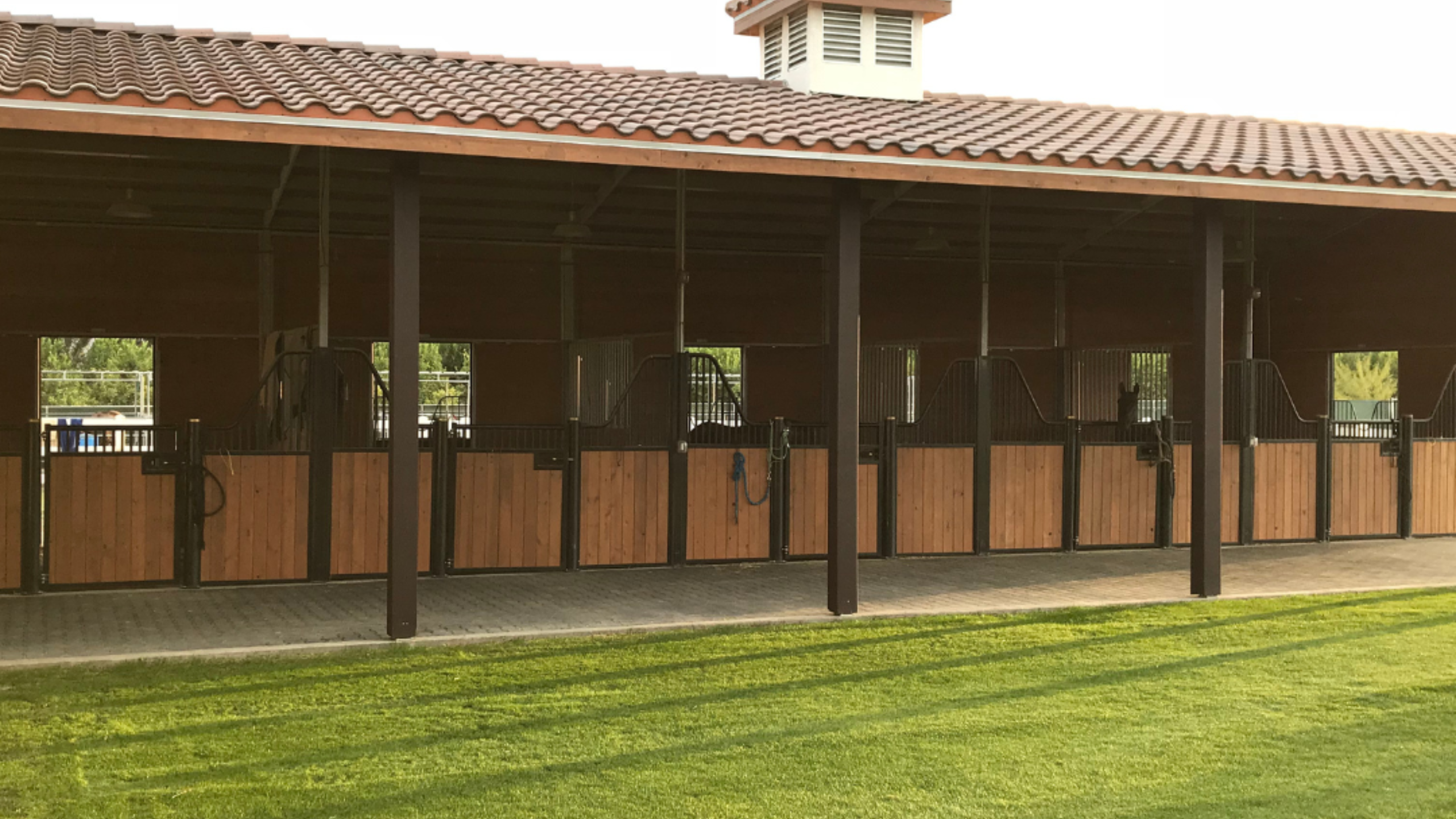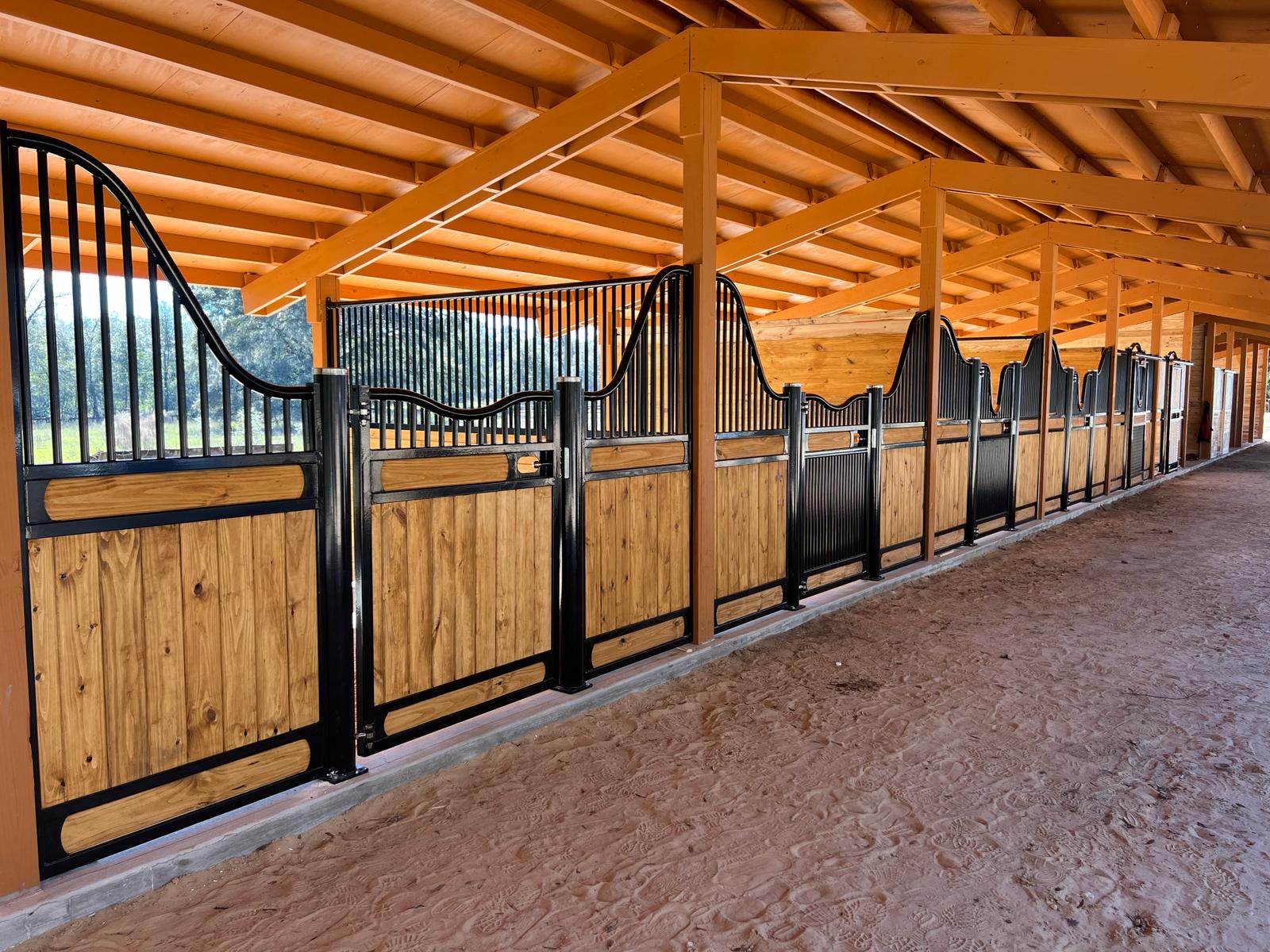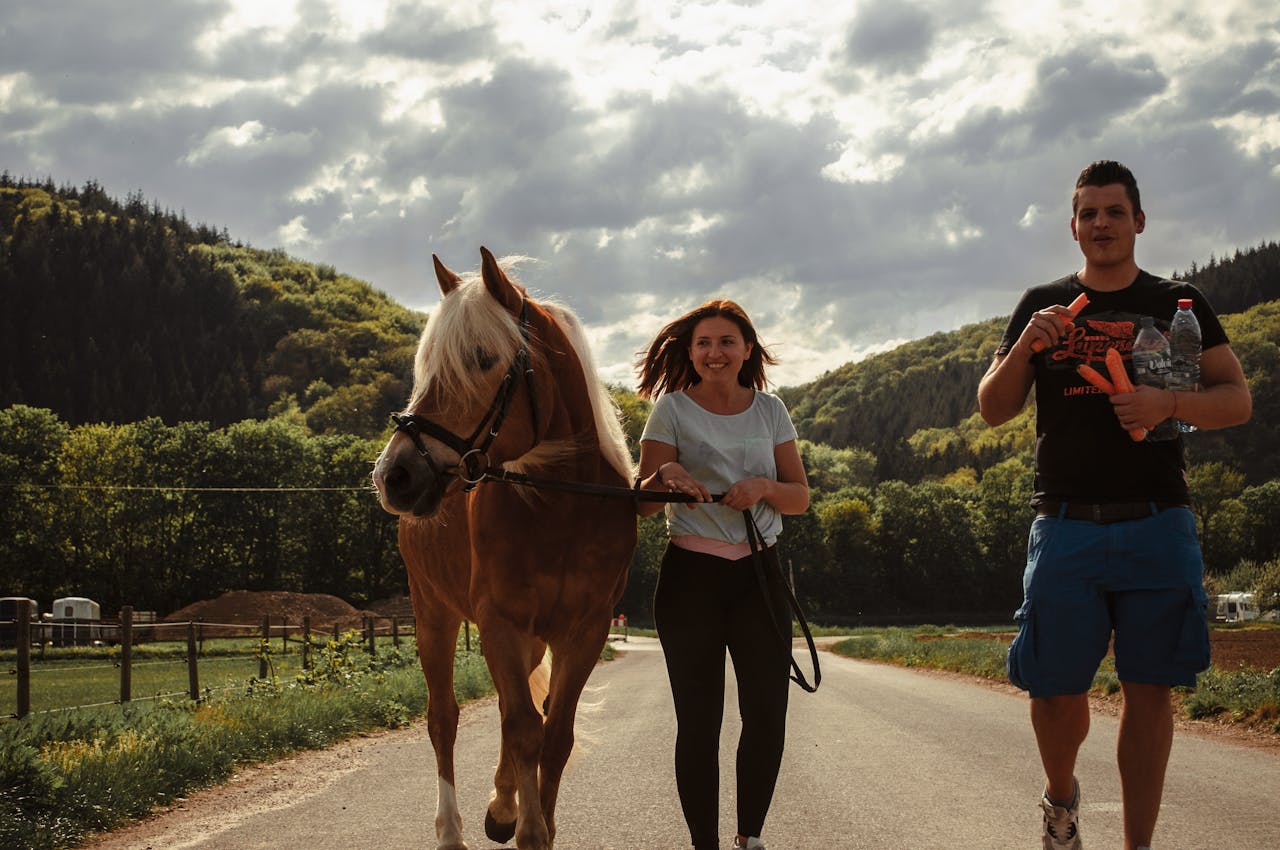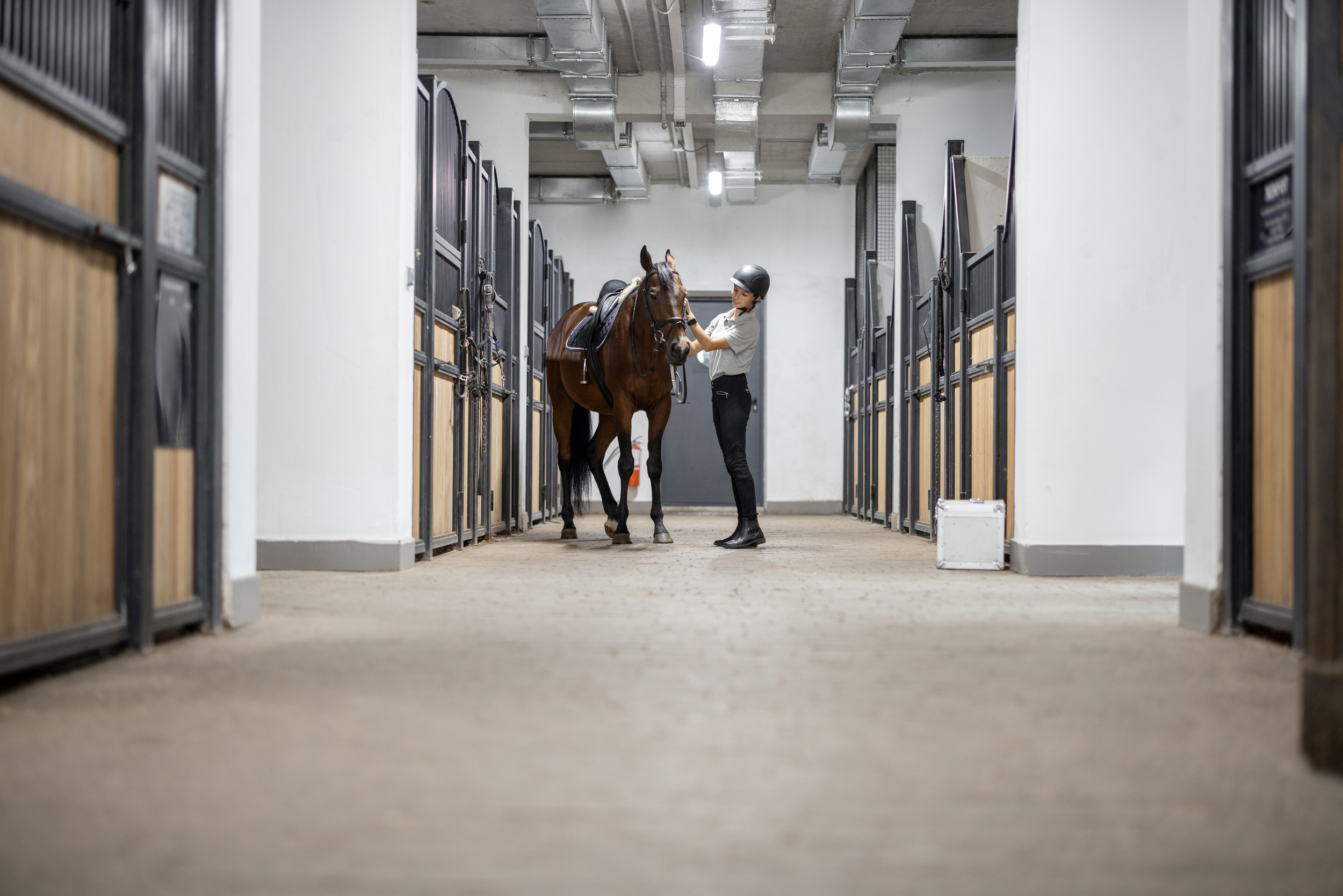For horse lovers looking to enhance their equestrian facilities, the journey begins with exploring horse properties. Whether you’re interested in buying a horse property for the first time or want to improve the one you already have, we can help you through the process.
For starters, It is very important to find a property that meets both your needs and the needs of your horses. Remember that because you love your horses so much, you want the best for them. Making sure they have a lot of safe space to run is very important for their health and fitness. Horses do best when they can move around freely, so let’s focus on finding a property that gives them this important freedom.
Fortunately, there are lots of equestrian real estate options available if you know where and what to look for.
Here are some things to consider when buying a horse property:
- How to evaluate the safety of existing horse stables
- Finding the best type of land for raising horses
- The effect any possible zoning laws will have on your plans
- If an adequate supply of water is on the property
- How much acreage you’ll need to accommodate each horse
- If the owner has properly maintained the property over the years
So lets discuss each one of these in detail.
Evaluating a property with existing horse stables
If you want a horse property with stables, you may not find ones that meet your standards or ideas. When you search for the right facility for your horse, you’ll quickly realize that not all horse stables are created equal.
Stable layouts can range from minimal features to a full service setup. However, those definitions are arbitrary and full service for one stable can mean something entirely different at another. Knowing what “full service” means for each property listed in real estate postings is important.
Ask the right questions to avoid wasting time visiting horse properties that don’t suit your needs. Save yourself and your agent time by being clear about what you’re looking for.
Questions to consider asking include:
- How old are the existing horse stalls and building?
- What built-in extras does it include, such as tack rooms, feed storage, and a grooming stall?
- Are there other buildings, such as arenas, or equipment and hay storage?
- Is there a waste management and drainage system in place?
- Are the horse buildings fitted with electricity and hot water?
- What percentage of the acreage is wooded vs pasture?
- Do you have any problem with flooding or standing waters?
- What maintenance will we need to do in the next two years?
Finding the best type of land for raising horses

Finding good soil and land for horses may need more investigation than you can do. It encompasses more than just the number of acres, the number of buildings on the land or the price. It also involves the vegetation, top soil, and the water and bedrock underneath it.
All these things can have a bearing on your horse’s health and strength. But how do you go about determining if the land you are considering is right for your horses?
Well, the best way to go about it is to take a soil sample to your county extension office. They can analyze it for you and give you a detailed printout of your soil’s composition.
Also, talk to horse experts in the area and learn what issues they’ve had to deal with. These issues are where a quality equestrian real estate agent can be worth their weight in gold. They’ll know what to look for and ask about with each parcel you visit.
The effect any possible zoning changes will have on your upcoming plans
Before purchasing a large parcel of land, you need to make sure that it has the proper zoning designation. If the land looks suitable for horses and is secluded, it doesn’t guarantee permission to keep horses there. You still need permission to keep horses on the land, even if it seems like a good fit for them.
Having a suitable and isolated area doesn’t automatically grant the right to keep horses without authorization. You should look for land zoned AG (agricultural) to ensure the city or county allows a horse farm.
Ask your realtor about the property’s zoning before buying it. Double-check the information yourself to be sure. Some counties have weird requirements that restrict where you can place your barn, in relation to the house, and so on. Be well-educated on zoning requirements and all rights before you buy into an equestrian estate!
Make sure there is an adequate supply of water on the land
Water is extremely important to the health of your horses. It helps with digestion and it helps prevent colic and dehydration.
On average, a single horse can drink anywhere from 5-10 gallons of water a day. It is important for a horse property to have access to lots of water, like ponds or automatic watering systems.
Just because a property has water present or flowing through it doesn’t automatically grant you usage rights. In some cases, sellers do not include the right to drill for water when selling land. Before buying land, especially for a horse farm, it’s important to know your water rights well. Understanding this is crucial.
Remember, if you lead a horse to water, he will definitely drink.
Determine the acreage you’ll need to accommodate each horse

Nothing is more natural to your horses’ well-being than forging. They love grazing in the wide-open spaces and socializing with other horses. So before investing in a horse farm, you should make sure it is adequate for the number of horses you intend to have. At the very least, plan for two horses, as they are very social animals who need the company of another for mental health.
Now, you might think the equestrian real estate you have in mind is so vast you know there’ll be enough room for your horses. But some of the land could be covered by swamps, woods, buildings, poor pasture, and even ponds. This type of land cannot be what is considered “usable acres” for foraging. Therefore, you’ll need to subtract all such acreages from the total land purchase and allow for a minimum of 2 acres per horse of usable acres.
Some horse experts, such as Equi-therapy.net, say that “the general rule is to allow at least one and a half acres of grazing for the first horse and one acre for each horse or pony after that. Provision also needs to be made for every part of the pasture to be rested for at least six weeks, twice a year.” We feel this is good advice but still recommend 2 acres per horse if you’re currently in the market.
Horses are happiest with a lot of elbow room.
Check to see if the property has been properly maintained over the years
Unless you intend on buying a fixer-upper, perform a full inspection of the property… and then hire an equine expert to do the same inspection. Look for telltale signs of downed fencing, overgrowth, and broken water lines. Chances are, though, you’ll find varying degrees of neglect no matter which equestrian real estate you look at.
The key is to gauge how much time it will take to make repairs and how long before you’ll need it to be ready. It doesn’t hurt to ask the existing owner what they anticipate will need to be replaced or repaired in the next two year.
You may not get full disclosure but some straight-shooters will tell it like it is, to the best of their knowledge. And of course, have a quality horse stable supplier like Saratoga Stalls on speed dial. They’ll help you get your new horse farm up to standard and looking beautiful in no time at all.
Top horse property states in the USA: ( as of March, 2024 )
Texas: Often leading the country in the number of horses, Texas is renowned for its vast ranches and diverse equestrian communities. The state’s size and variety of landscapes make it ideal for various horse-related activities.
California: With its large economy and varied geography, California offers everything from luxurious estates in Southern California to expansive ranches in its central and northern parts.
Florida: Known for its thriving equestrian centers like Wellington and Ocala, Florida is a hotspot for horse enthusiasts, especially for those interested in show jumping, dressage, and thoroughbred racing.
Kentucky: Famed as the “Horse Capital of the World,” Kentucky is synonymous with thoroughbred breeding and racing, particularly in the Lexington area.
Oklahoma: Home to a significant number of horses, Oklahoma is known for its strong Quarter Horse and Native American horse cultures, along with major horse shows and events.
Virginia: With a rich history in fox hunting and colonial-era equestrian traditions, Virginia offers a variety of horse properties in both its rural and more suburban areas.
Colorado: Known for its natural beauty and outdoor lifestyle, Colorado is a favorite for horse owners who enjoy trail riding and the western way of life.
Websites to help find equestrian properties:
HorseProperties.net: This site is a leading destination for browsing and buying equestrian real estate across the USA and Canada. It features a wide range of properties, from luxury estates to more affordable acreage.
LandSearch: This platform lists horse properties for sale in the United States, offering a diverse selection of small horse farms, equestrian estates, and large horse ranches.
HorseRanchSearch.com: Specializing in horse ranches and farms, this website offers advanced searching capabilities and a professional listing service for those looking to sell or buy horse properties.
Christie’s International Real Estate: For those seeking luxury equestrian estates, Christie’s showcases an extraordinary collection of properties dedicated to horsemanship. Their listings include working ranches, horse farms, and racehorse training facilities in various high-profile locations.
Horse Farm and Ranch: Online since 1999, this site specializes in equestrian properties, offering a selection of farms, ranches, and luxury estates, as well as commercial equine properties.
EquineNow: This platform lists various types of horse properties, including equestrian facilities, raw land, and homes with acreage suitable for horses.
United Country Real Estate: They feature a wide range of horse properties across different states, catering to different needs whether it’s professional equestrian centers or cozy country homes.
Horse Properties of Texas: As the name suggests, this website is focused on Texas, offering a variety of equine properties across the state, from small pastures to large ranch lands.
Final Thoughts
When it comes to equestrian real estate, cheaper is not always better. Follow these tips and have your realtor show you a variety of properties before settling on one. Be sure to use common sense and don’t be afraid to ask a lot of questions. Also, if you’re financing the property, be sure to do your research. The decisions you make during this process could make your life easy, or difficult in the years to come.




